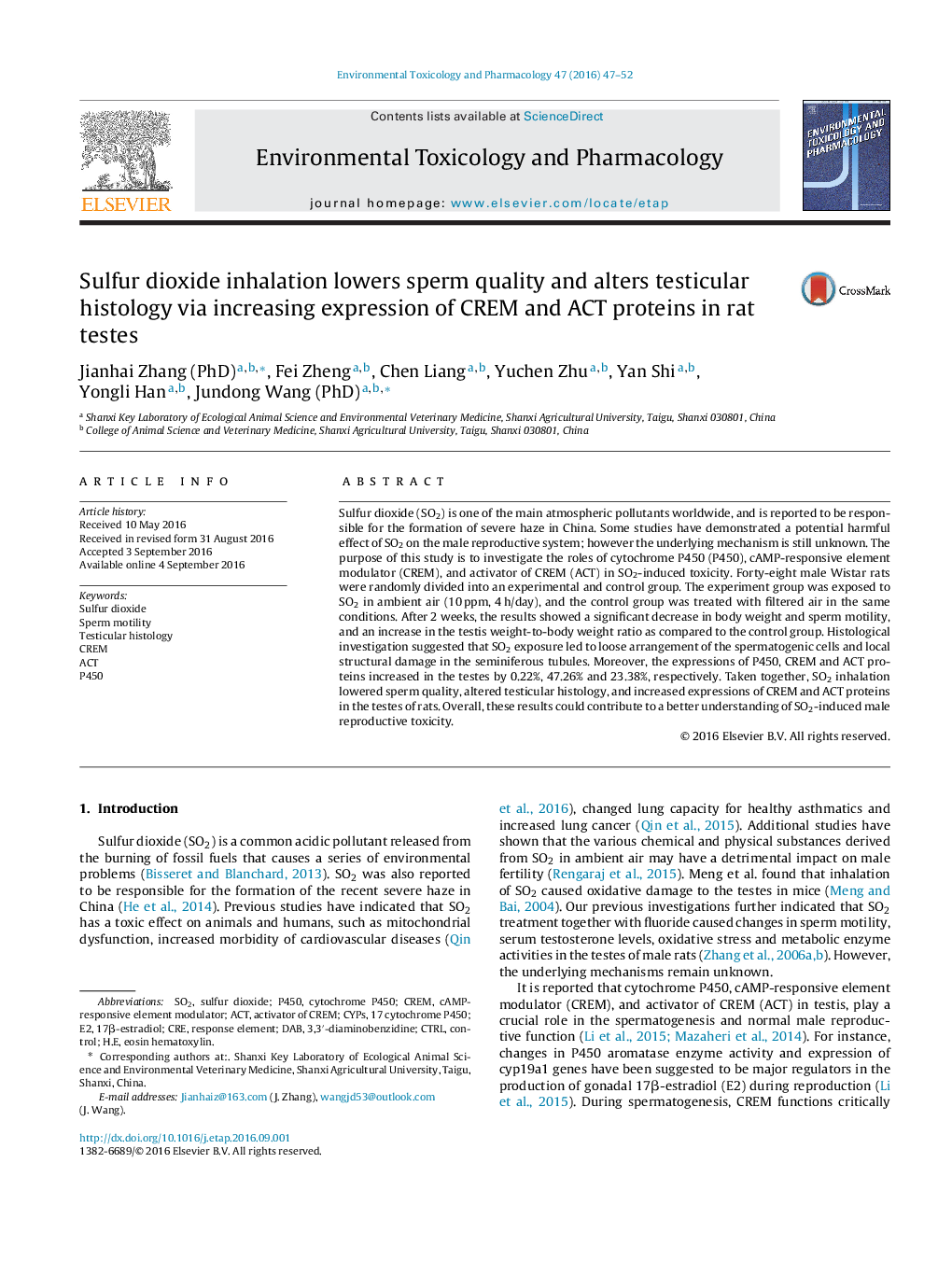| Article ID | Journal | Published Year | Pages | File Type |
|---|---|---|---|---|
| 2582742 | Environmental Toxicology and Pharmacology | 2016 | 6 Pages |
•Sulfur dioxide inhalation decreased sperm motility, and did not affect sperm count of rats.•Sulfur dioxide inhalation altered the layers and local structure of seminiferous tubules in rat testes.•Sulfur dioxide inhalation activated the expressions of CREM and CAT in the testes of rats.
Sulfur dioxide (SO2) is one of the main atmospheric pollutants worldwide, and is reported to be responsible for the formation of severe haze in China. Some studies have demonstrated a potential harmful effect of SO2 on the male reproductive system; however the underlying mechanism is still unknown. The purpose of this study is to investigate the roles of cytochrome P450 (P450), cAMP-responsive element modulator (CREM), and activator of CREM (ACT) in SO2-induced toxicity. Forty-eight male Wistar rats were randomly divided into an experimental and control group. The experiment group was exposed to SO2 in ambient air (10 ppm, 4 h/day), and the control group was treated with filtered air in the same conditions. After 2 weeks, the results showed a significant decrease in body weight and sperm motility, and an increase in the testis weight-to-body weight ratio as compared to the control group. Histological investigation suggested that SO2 exposure led to loose arrangement of the spermatogenic cells and local structural damage in the seminiferous tubules. Moreover, the expressions of P450, CREM and ACT proteins increased in the testes by 0.22%, 47.26% and 23.38%, respectively. Taken together, SO2 inhalation lowered sperm quality, altered testicular histology, and increased expressions of CREM and ACT proteins in the testes of rats. Overall, these results could contribute to a better understanding of SO2-induced male reproductive toxicity.
